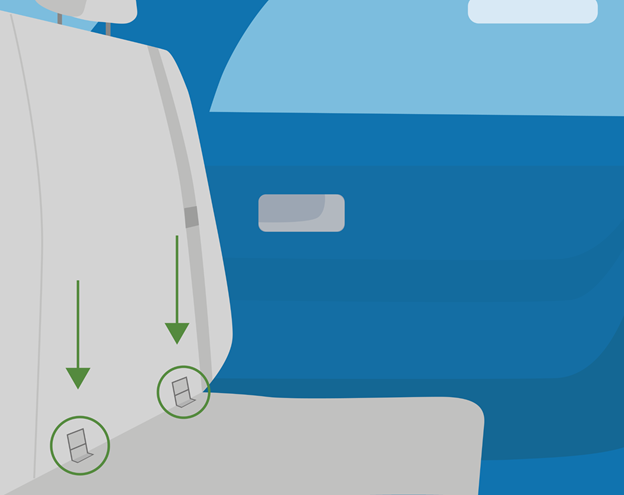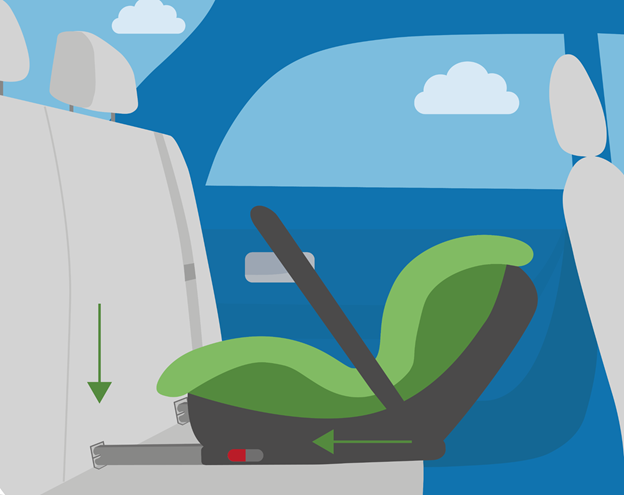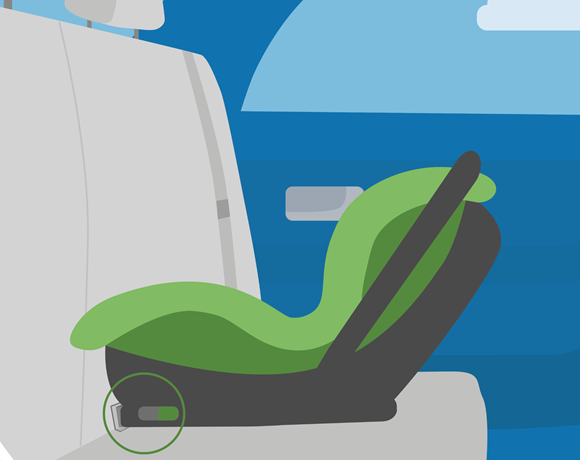When it comes to fitting a child’s car seat, it’s extremely important you do it correctly. If not, you could be putting your child’s safety at risk, so it’s worth taking your time and the utmost care and attention when you’re installing the seat in your vehicle.
The truth is, even if you consider yourself to be a brilliant driver or you own one of the safest cars you can, it’s crucial that your brood are safe and secure when you’re travelling from A to B.
To find out more about how to correctly install a car seat, as well as advice on rear-facing versus forward-facing seats, if you should or shouldn’t use a car seat in the front seat and tips on when you can stop using one of these seats for your little one, keep reading.
Fitting a child’s car seat
There are many different car seats to choose from, each of which will have their own set of specific instructions on how to install the seat correctly, so it’s worth reading this guidance thoroughly first.
To give you a general idea of what to expect when fitting a child’s car seat, check out these useful tips.
Installing a car seat using ISOFIX
Today, the majority of new cars feature International Standards Organisation Fix (ISOFIX) – a universal system for fitting car seats that uses attachment points which are built into the car. ISOFIX points allow you to fit an ISOFIX car seat securely and safely, and it’s simple too.
To fit a car seat using ISOFIX, you should follow these steps:
– Locate the attachment points
If your car is ISOFIX-compatible, you should be able to find the attachment points in the back seat. They are usually located in the gap between the upholstery, and they may have a cover over them. In this case, you should open the cover to reveal the attachment point.

– Put your car seat into position
Next, place the car seat onto the back seat of the car, ensuring that it is as close to the back of the seat as possible. Push it back firmly so that the two fixing points of the car seat lock into the two ISOFIX attachments. When it locks into place, you should hear the metal clips click together.

The car seat may have a third fixing point, such as a support leg or a top tether which are designed to prevent it from moving forward in the event of an accident. A support leg should be adjusted so that it is at the right height and is stable against the floor of the car. A top tether should be clipped to the yellow hook of the ISOFIX point located on the floor of the boot and firmly tightened.
– Look for the coloured indicators
Many ISOFIX car seats feature coloured indicators which confirm if it has been fitted correctly. In most cases, green indicates a correct fit, while red suggests it is not installed properly and is unsafe to use. These coloured indicators can often be found on the base of the car seat, as in the image below, and on the support leg or top tether if it has a third fixing point.

Once all of these indicators are showing the correct colour, and the seat feels sturdy and does not move, it should be safe to use.
Installing a car seat without ISOFIX
Cars manufactured before 1997, or even slightly after, may not feature ISOFIX. In this case, you will need to fit and secure the car seat using a seat belt.
To learn how to fit a car seat using a seat belt, keep reading.
– Find the car seat’s seat belt path
Before you even put the car seat into the car, you should find the seat belt path. This is a set of slots or holes on the sides of the seat itself. You can refer to the car seat manual to find out where these are if you’re not sure.
– Feed through the seat belt
Next, put the car seat into the car and feed the seat belt through the designated slots to buckle it into place. This process can differ between models, so it’s important to follow the guidance for your specific car seat.
You should take your time to slowly feed the seat belt throughout the designated slots, ensuring that the belt does not become twisted or slack at any point.
– Clip in the seat belt
Once you have pulled the seat belt as far as it will go and weaved it through each slot as indicated, you should clip it into place. At this point, the seat belt should feel rigid, and the seat should not move at all. Only then will the car seat be safe to use.
Can you put a car seat in the front seat?
It’s recommended that children always sit in the back seat as this is the safest option. However, you can install a rear-facing car seat in the front as long as the front airbags are deactivated, and you can install a forward-facing car seat if the passenger seat is pushed back as far as possible to allow the maximum distance between the child and the airbag.
When can a child face forward in a car seat?
Your child must stay rear-facing until they weigh over 9kg, or over 15 months old if you are using an i-Size seat. However, it is much safer for your child to be rear-facing for as long as possible, so even if they hit the weight or age requirement to face forwards, you don’t necessarily have to change the position of the seat.
When can a child stop using a car seat?
A child must use a car seat until they are 135cm tall or at least 12 years old. At this point, children can stop using the car seat, and they must wear a seat belt instead.
It’s no secret that car safety is paramount – especially when it comes to your smaller passengers. As long as you follow the recommended advice and ensure your car seat is fitted correctly, you will be able to enjoy stress-free tips with the kids all year round.
